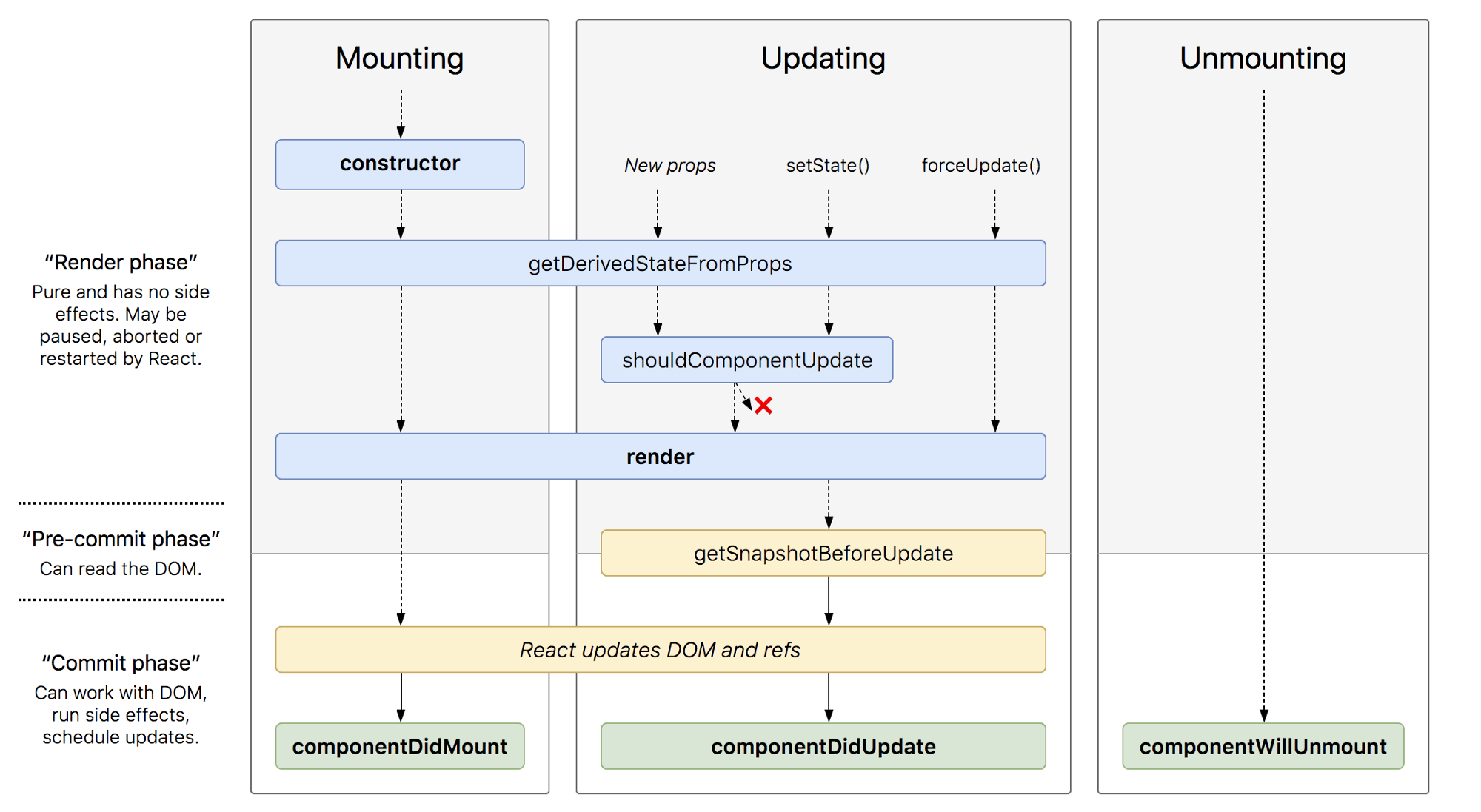Explain a ReactJS lifecycle

The component lifecycle has three distinct lifecycle phases:
- Mounting: The component is ready to mount in the browser DOM. This phase covers initialization from
constructor(),getDerivedStateFromProps(),render(), andcomponentDidMount()lifecycle methods. - Updating: In this phase, the component gets updated in two ways, sending the new props and updating the state either from
setState()orforceUpdate(). This phase coversgetDerivedStateFromProps(),shouldComponentUpdate(),render(),getSnapshotBeforeUpdate()andcomponentDidUpdate()lifecycle methods. - Unmounting: In this last phase, the component is not needed and gets unmounted from the browser DOM. This phase includes
componentWillUnmount()lifecycle method.
It's worth mentioning that React internally has a concept of phases when applying changes to the DOM. They are separated as follows:
- Render The component will render without any side effects. This applies to Pure components and in this phase, React can pause, abort, or restart the render.
- Pre-commit Before the component actually applies the changes to the DOM, there is a moment that allows React to read from the DOM through the
getSnapshotBeforeUpdate(). - Commit React works with the DOM and executes the final lifecycles respectively
componentDidMount()for mounting,componentDidUpdate()for updating, andcomponentWillUnmount()for unmounting.
React 16.3+ Lifecycle methods:
getDerivedStateFromProps: it invokes right before callingrender()and is invoked on every render. This exists for rare use cases where you need a derived state. Worth reading if you need derived state.componentDidMount: Executed after first rendering and where all AJAX requests, DOM or state updates, and set up event listeners should occur.shouldComponentUpdate: Determines if the component will be updated or not. By default, it returnstrue. If you are sure that the component doesn't need to render after the state or props are updated, you can return a false value. It is a great place to improve performance as it allows you to prevent a re-render if component receives a new prop.getSnapshotBeforeUpdate: Executed right before rendered output is committed to the DOM. Any value returned by this will be passed intocomponentDidUpdate(). This is useful to capture information from the DOM i.e. scroll position.componentDidUpdate: Mostly it is used to update the DOM in response to prop or state changes. This will not fire ifshouldComponentUpdate()returnsfalse.componentWillUnmount: It will be used to cancel any outgoing network requests, or remove all event listeners associated with the component.